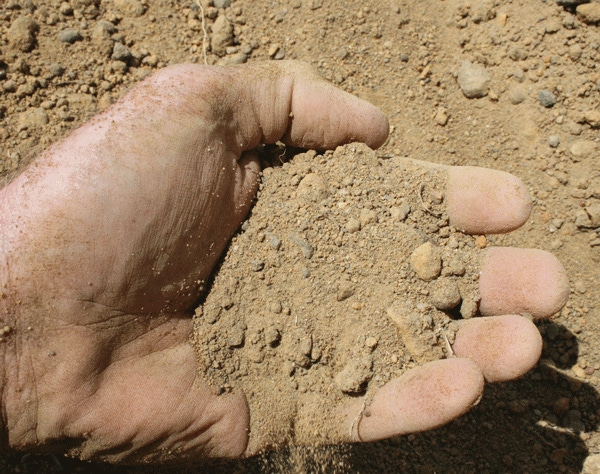
• The La Niña effect, somewhat less known than its counterpart, El Niño, follows when ocean temperatures cool in the eastern tropical Pacific Ocean — an effect expressed throughout parts of Central and South America and even as far away as the Southeastern United States.• The reduced rainfall that follows this trend will likely mean extra challenges for Southeastern row-crop producers.• While La Niña’s effects will be less evident on summer annual crops, the warmer winter and spring temperatures nevertheless may influence pest and disease pressure during the summer months.
October 13, 2010

La Niña’s calling card, expressed in unseasonably hot, dry conditions in the Southeast, is an issue farmers will be dealing with throughout this fall and winter possibly as late as spring, according to the Southeast Climate Consortium.
As a matter of fact, this calling card already has been presented.
The La Niña effect, somewhat less known than its counterpart, El Niño, follows when ocean temperatures cool in the eastern tropical Pacific Ocean — an effect expressed throughout parts of Central and South America and even as far away as the Southeastern United States.
A reduction in rainfall and an increase in temperature, mainly in the fall and winter, typically follows.
“That’s what’s happening right now,” says Brenda Ortiz, an SECC-affiliated Alabama Cooperative Extension System agronomist and Auburn University assistant professor of agronomy and soils.
“You usually have a transition between El Niño and La Niña known as the neutral, but this year’s change was abrupt, with just one or two months under neutral conditions.”
The reduced rainfall that follows this trend will likely mean extra challenges for Southeastern row-crop producers, Ortiz says.
“It means aquifers are probably not going to have enough water to recharge,” she says. “And if these dry conditions are carried over into spring, we’ll be dealing with low levels of groundwater for irrigation to start the next summer growing season.”
Southeast Alabama, which depends on its aquifers for crop irrigation, will likely be the most affected, she says.
“All the analyses we have conducted show the southern part of Alabama receives the higher impact in terms of dryness and rainfall,” Ortiz says.
Aquifer recharge
However, reduced rainfall will affect surface water and aquifer recharge throughout the Southeast, the SECC stresses.
What most concerns Ortiz is the effects this prolonged dryness will have on increasing temperatures at a time when winter crops - winter wheat, forages and vegetables — are sorely in need of adequate chilling hours.
“Plants are not going to be able to accumulate the degree units required for flowering — that may be an issue,” she says.
For farmers, that may be only the beginning of the challenges.
The SECC foresees a high probability that La Niña will develop into one of the stronger events of the past 60 years, which will likely mean that its effects will be felt into the spring.
With this in mind, if La Niña is still strong during the spring, Ortiz says farmers should consider planting summer crops earlier than normal to take advantage of summer rains during peak water demand — a special concern for corn producers.
“The corn tasseling and ear development period in corn production is one when the plants require lots of water,” she says. “So in those cases in which you aren’t able to irrigate adequately, early planting may allow you to take better advantage of summer rainfall.
“Even so, one should plant with the understanding that early freeze might occur.”
While La Niña’s effects will be less evident on summer annual crops, the warmer winter and spring temperatures nevertheless may influence pest and disease pressure during the summer months.
Cotton producers, should be especially mindful of cropland located near yellow mustard and wild pansy plants, which are ideal hosts for thrips.
Warm conditions may also enable soybean rust to over-winter on kudzu in south Georgia and throughout much of the Alabama Gulf Coast and Florida Panhandle.
If dry conditions persist during the spring, growers should also consider killing cover crops earlier to preserve more moisture in the soil, the SECC advises.
The agroclimate Web site, www.agroclimate.org, developed by the SECC, provides frequently updated climate and agricultural outlooks as well as decision support tools that can be used to reduce climate-related risks.
You May Also Like



